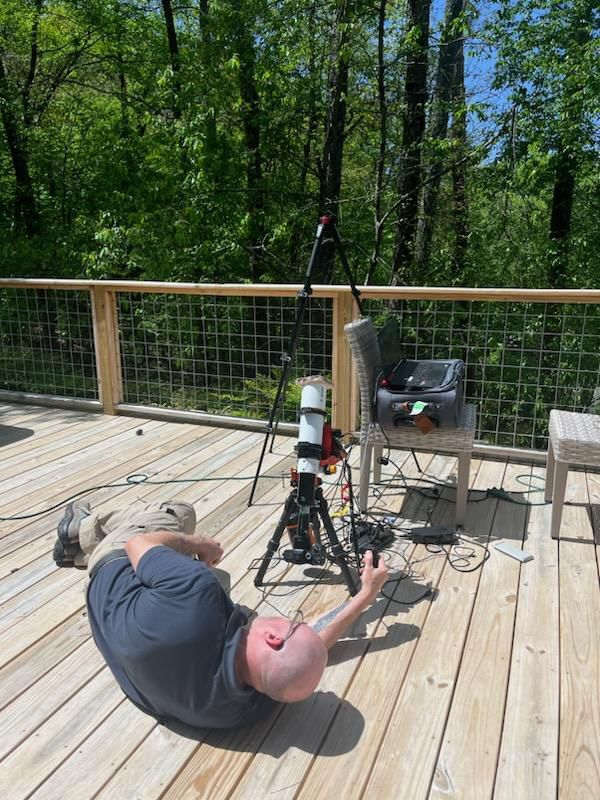Welcome to Deep Sky Workflows where my mission is to inform, educate, and astound our guests with facts and images about space. On this site, I share blog posts and stories about astrophotography, provide a comprehensive list of resources for astrophotography including software and equipment, share videos of the universe from behind-the-scenes and "how to" content to timelapses and raw footage, and present a gallery of deep space photographs with annotated images that show celestial coordinates, related images, the equipment that I used and more.

You can think of this as the "science" side of my craft. I also produce physical works of art by printing images on metal, canvas, and even wood. To view my artistic astrophotography galleries, upcoming events, courses that I plan to teach, and my portfolio of work, visit my online gallery site at DSWGalleries.com. That is the "art" side of my craft.
I was raised in St. Petersburg, Florida, and dreamed of becoming an astronaut until the introduction of a personal computer altered my trajectory. At the age of 7, I traded my space helmet for a keyboard and coded adventure games that sparked my lifelong passion for technology and creativity.
I dropped out of college after one semester and meandered through odd jobs from trying (and failing) to sell electronics from the trunk of my car to (successfully) caretaking the night shift at a pool hall, until I landed my first job that paid more than minimum wage as a Spanish-speaking car insurance claims representave. My programming prowess earned me a spot on the technology team, where I stayed until a “promotion” from hourly to salary cut my income in half and I decided to ditch St. Petersburg for a new life elsewhere.
I met my wife, Doreen, the first week after I moved to Atlanta. I played a pivotal part in building several successful technology companies through my roles of practice manager and director. This included an IPO, the development a new and profitable practice, and coding the foundational software while simultaneously building the initial infrastructure for a device management company that was later acquired by a tech giant for over $1 Billion. In 2017 I was surprised with an offer I couldn’t refuse: the opportunity to work at Microsoft. I joined as a "cloud developer advocate" and traveled around the world, presenting to developer audiences of thousands, producing videos, authoring articles and blog posts and occasionally delivering a rap song through YouTube. A year after my daughter left for college, Doreen and I made one of our dreams a reality when we relocated to the Pacific Northwest.

My work in Newport, including several images of the comet 12P/Pons-Brooks, aka “The Devil Comet,” has been featured in the Oregonian and the Oregon Coast Beach Connection. I was diagnosed with Young Onset Parkinson’s Disease in 2020, the same year I took my first deep space photograph after purchasing a device on a whim. I am an outspoken advocate for research and awareness of Parkinson’s Disease, have personally raised tens of thousands of dollars for the Michael J. Fox Foundation and I am serving my fourth year on the board of directors for the non-profit Young Onset Parkinson’s Network (YOPN).
My diagnosis is what brought Doreen and me to Newport, where we moved to relax on the coast, made another dream into reality, and have been blown away by how amazing and welcoming the people are here. After friends, family, colleagues, and neighbors began asking the same questons: "where is your gallery?" and "do you teach classes?" I responded by founding DSW Galleries LLC and printing my first pieces.
Astrophotography involves four phases: a planning phase, an aquisition phase, a processing phase, and a presentation phase. The processing phases involves different work flows based on the type of image, and I use these Deep Sky Workflows to produce my final pieces. I am delighted to share what I've learned with you and hope to network and learn from you, too. If you have a moment and are open to it, please contact me and let me know your interests and how I might help or what I might be able to learn from you.
Also feel free to follow and connect on any of these social media platforms:
Wishing you clear skies,
Jeremy Likness
